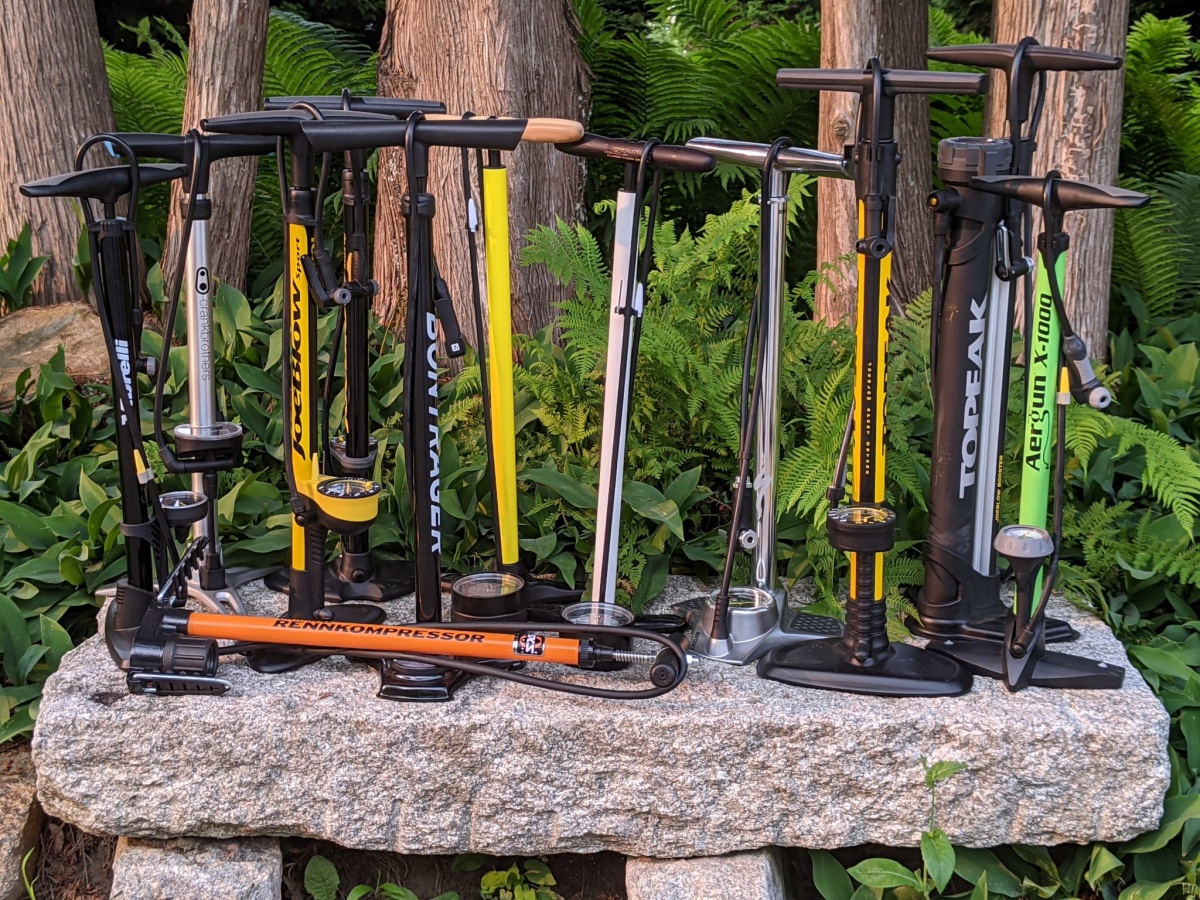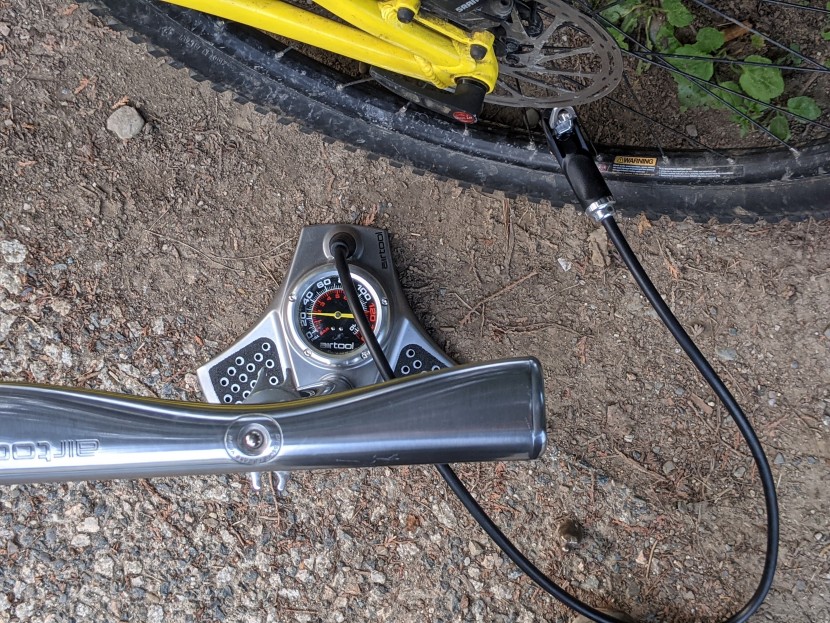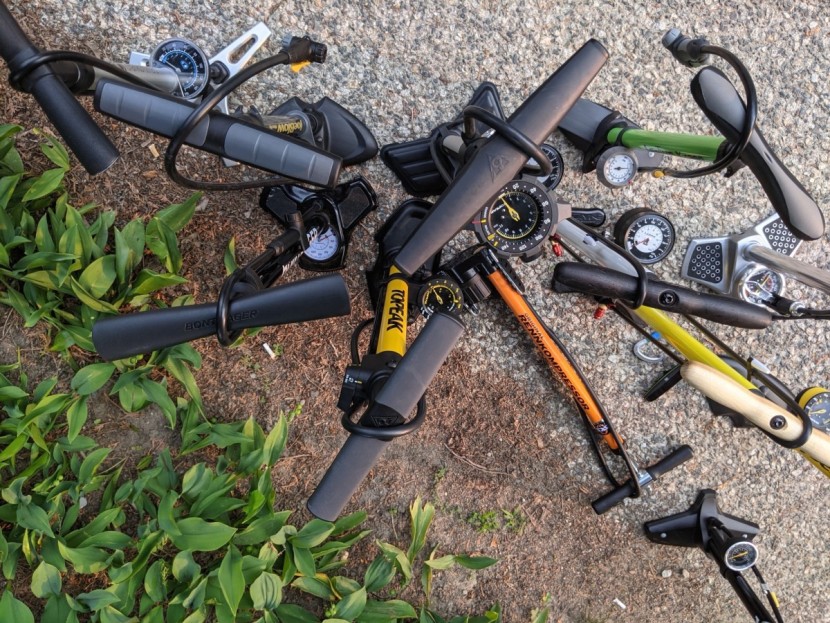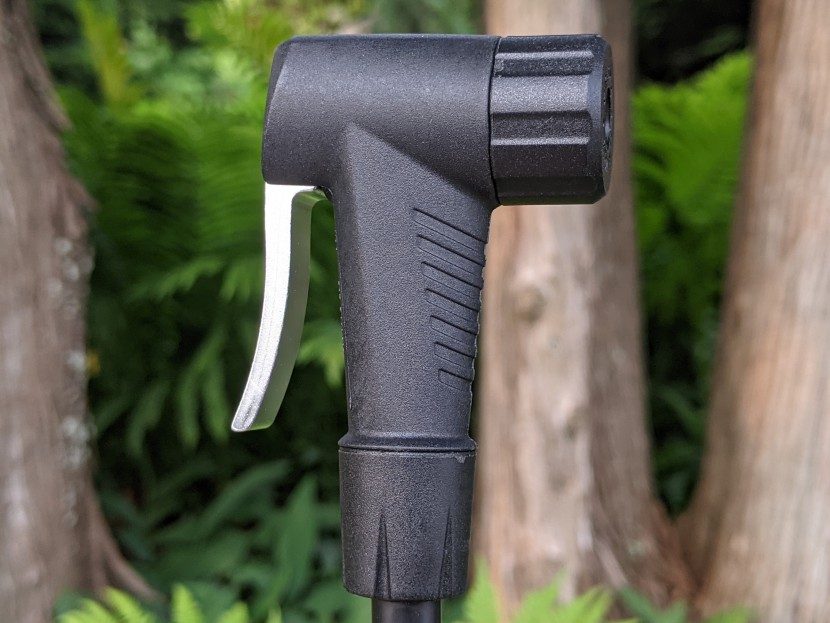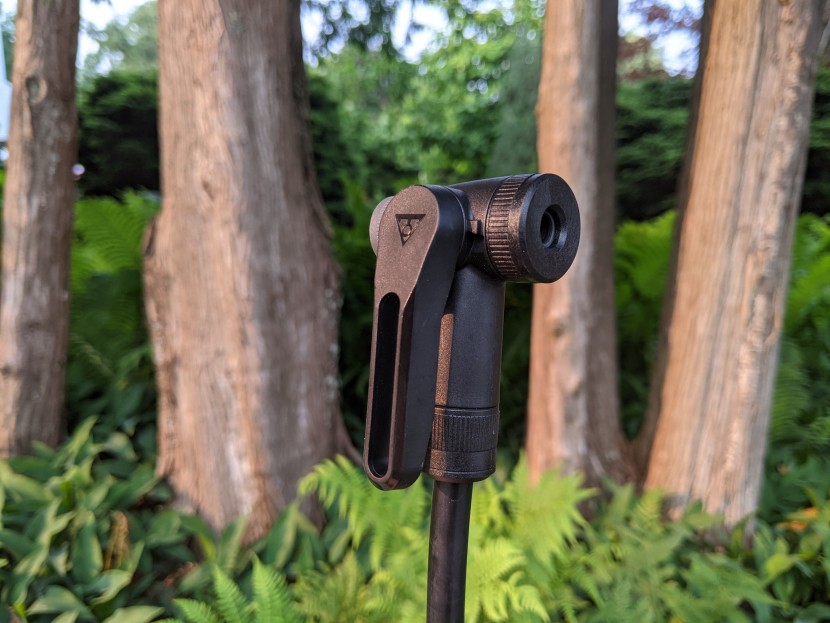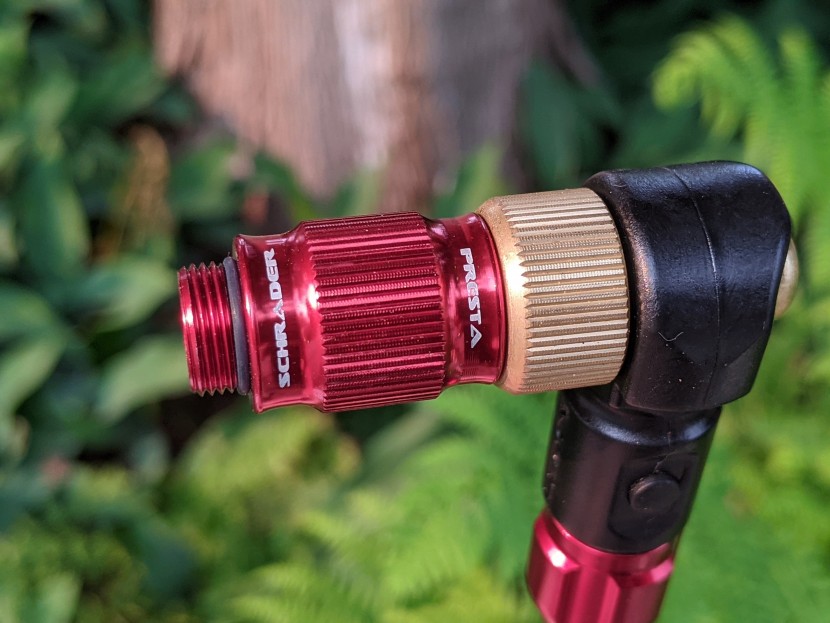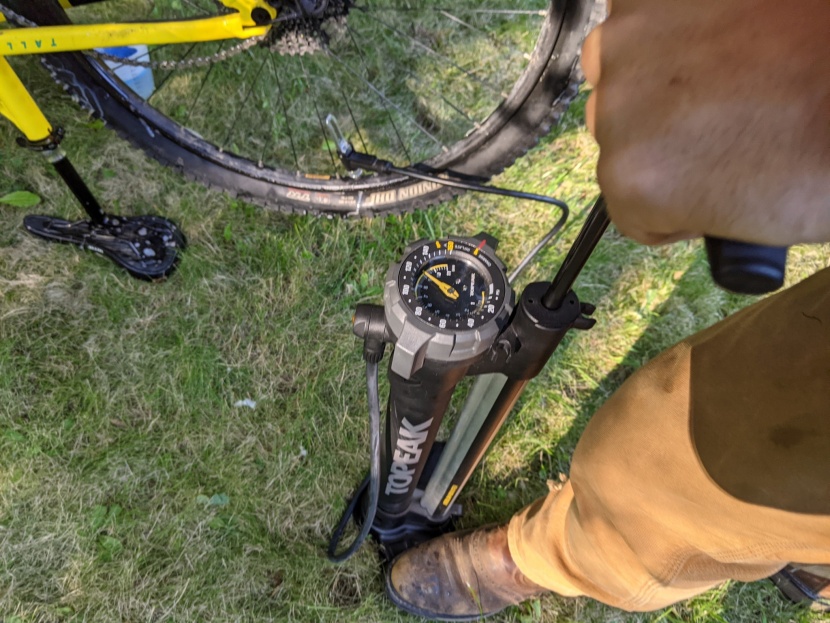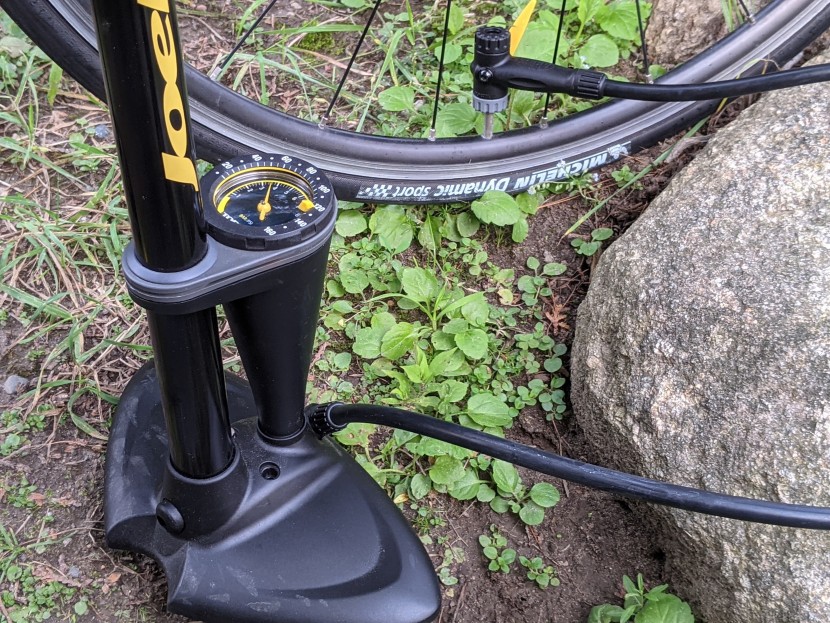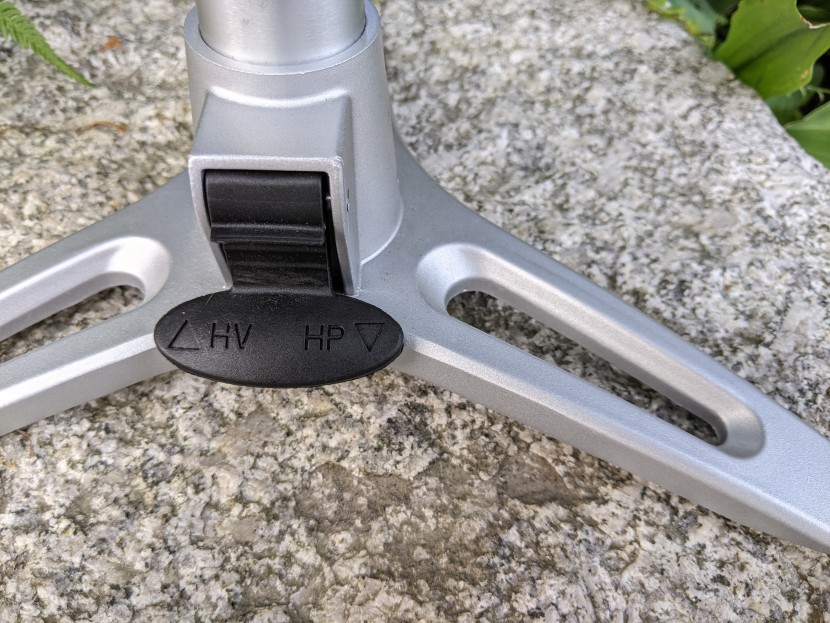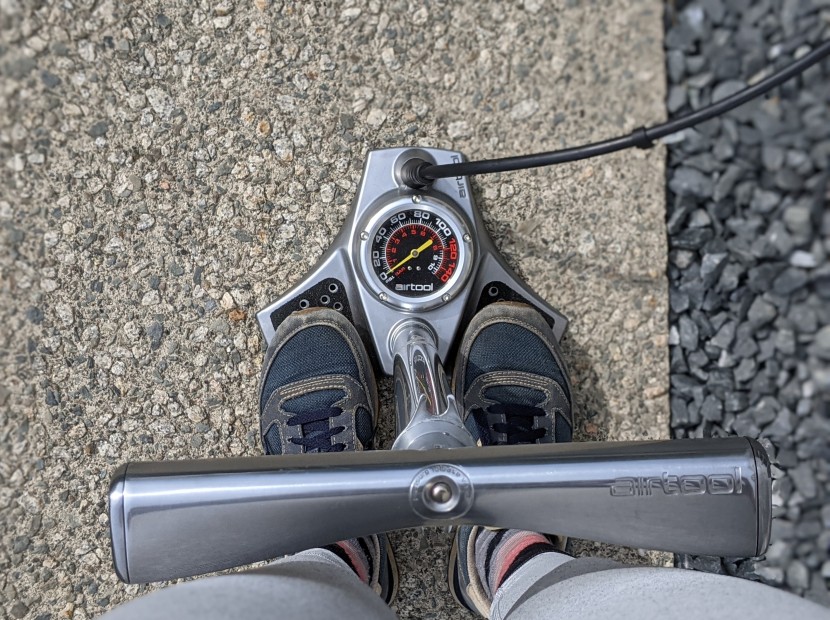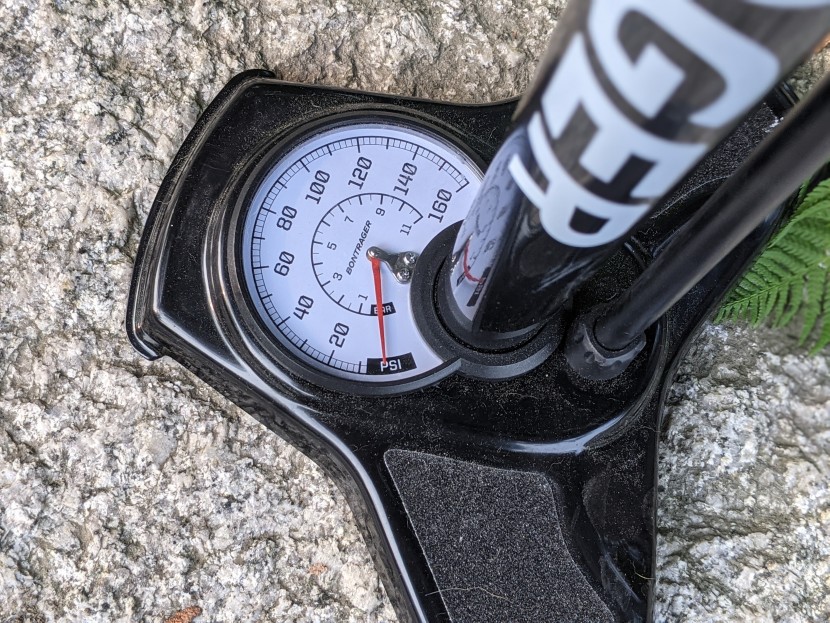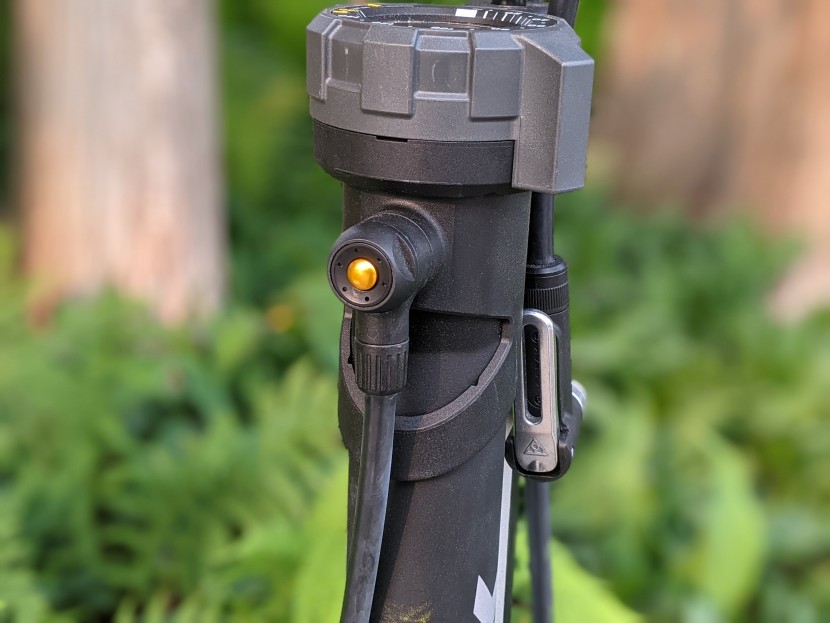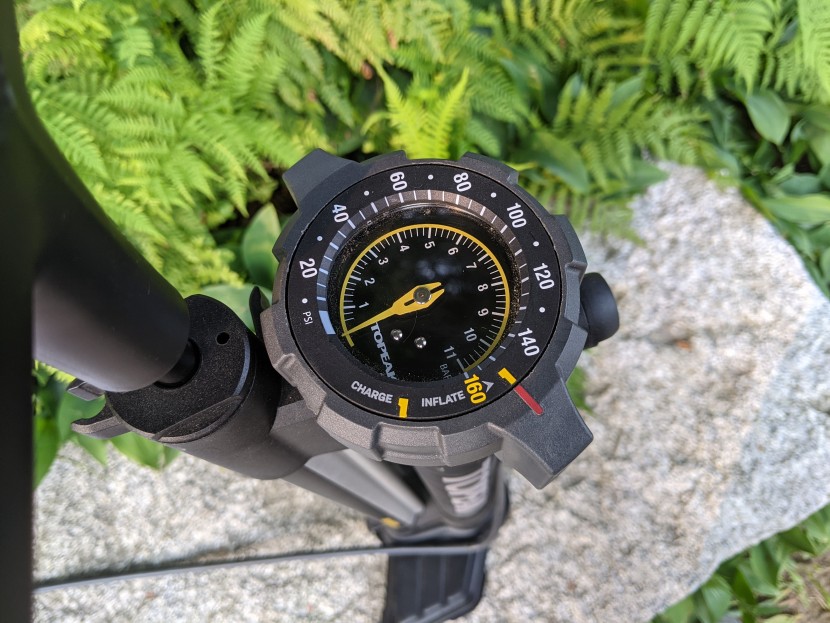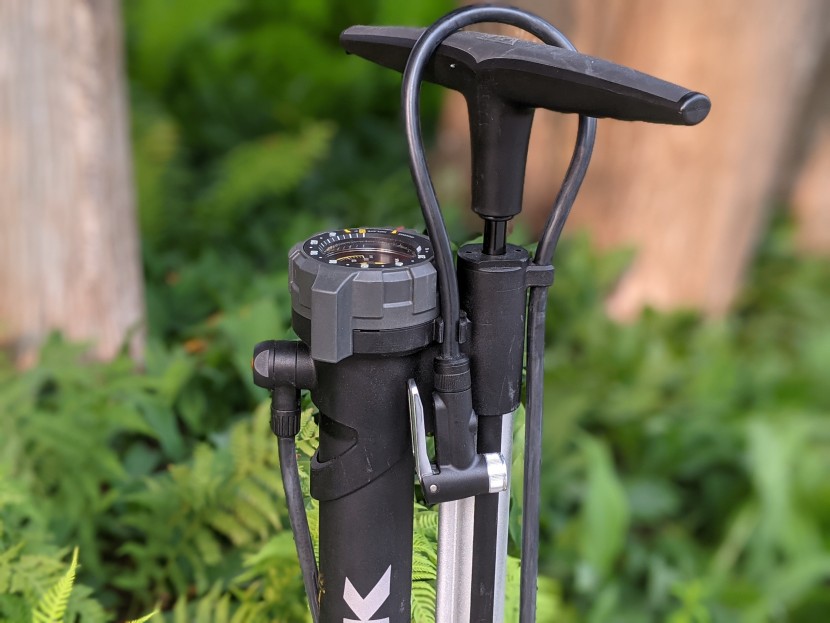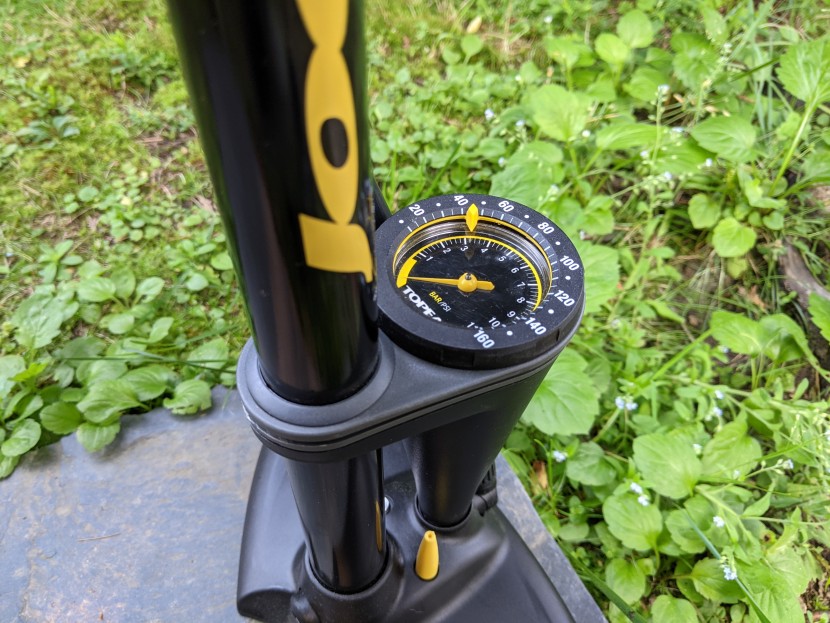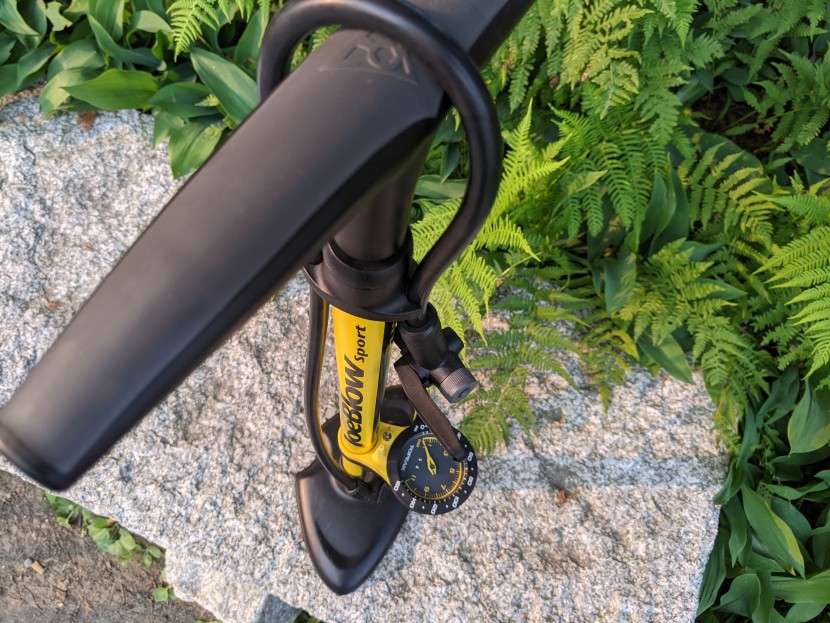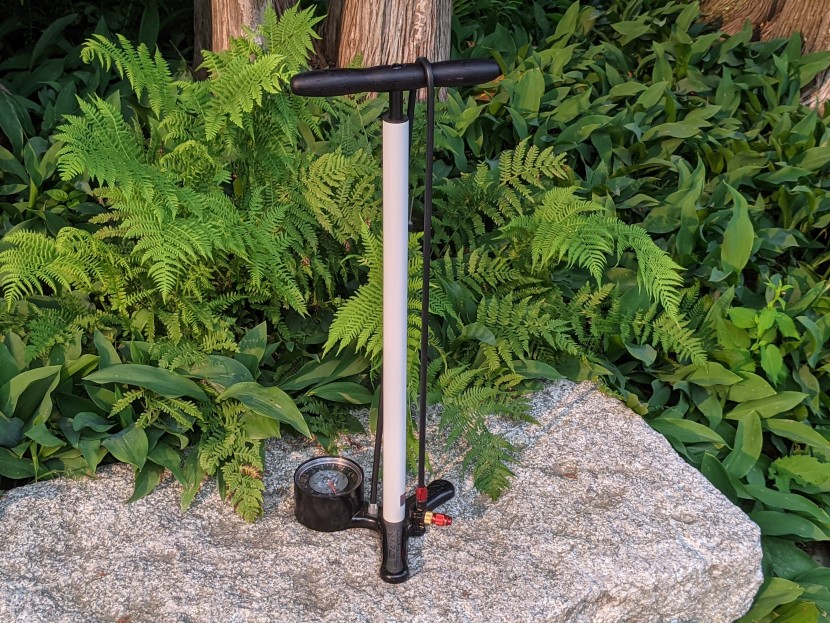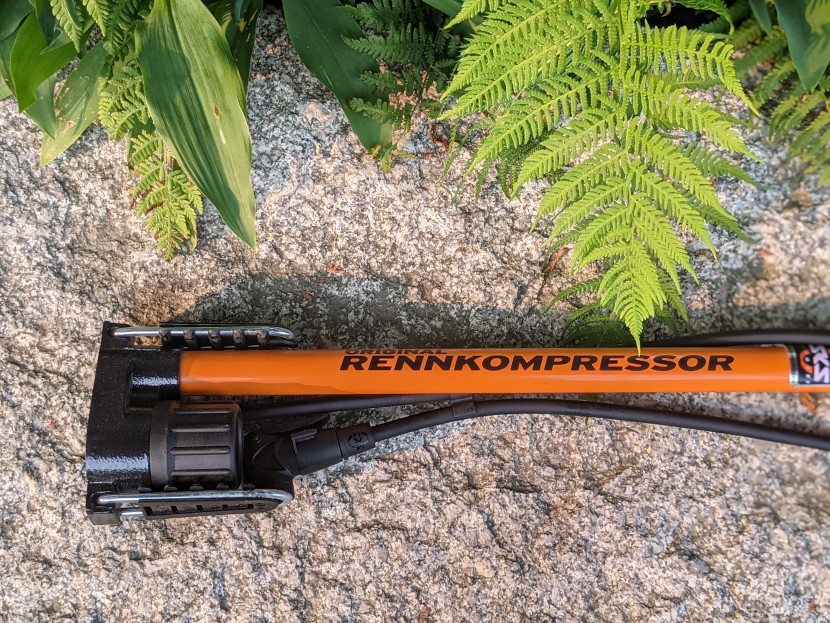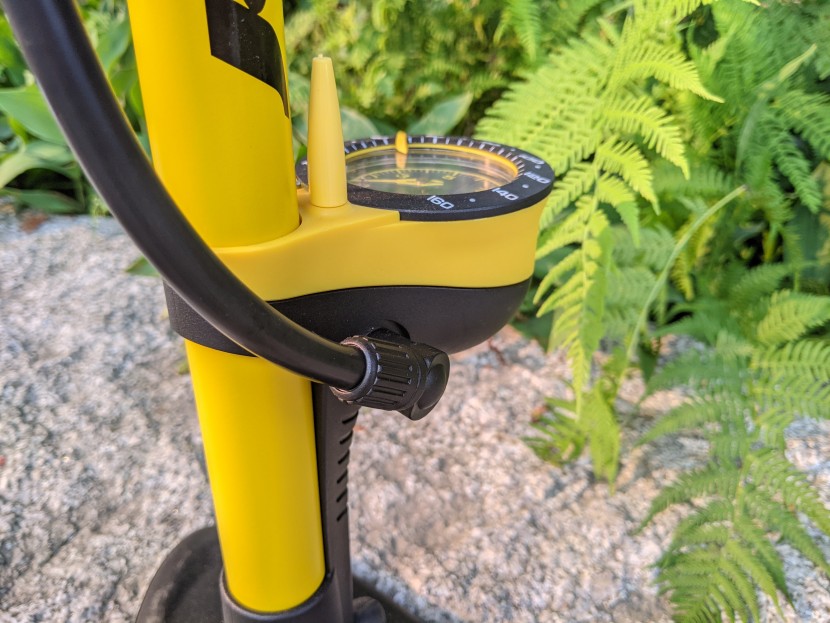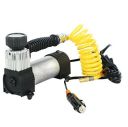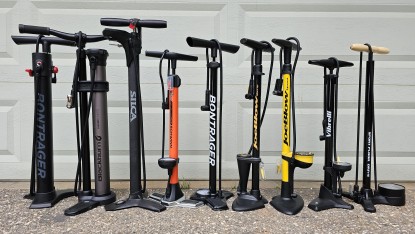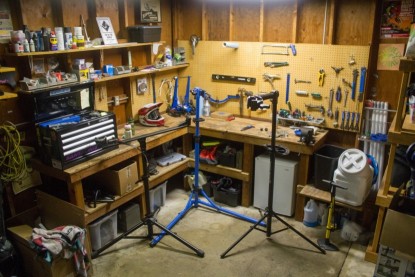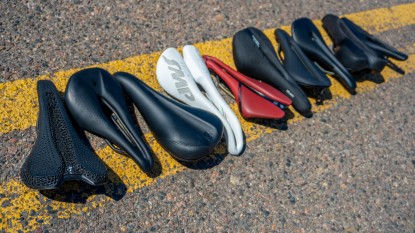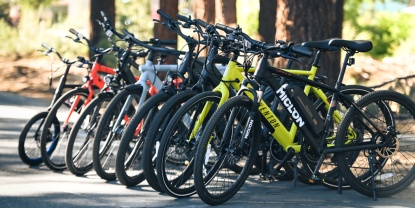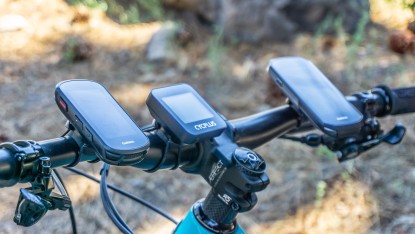Cycling is a gear-intensive sport, and modern cyclists can take a pretty long ride down Gear Obsession Lane, arguing the merits of different technologies, materials, designs, and ergonomics. The workhorse bike pump often lacks the glamour and flash that inspires the most heated debates. And yet, if not for a pump, even the best cyclist would get exactly nowhere.
And, if we venture beyond the world of bikes, plenty of other things in our lives require tires filled with air as well. Wheelbarrows, soccer balls, inflatable rafts, kiddie pools, air mattresses, exercise balls, roller skis (roller-what?) — the list goes on.
No doubt, you've used the same old pump that's been kicking around for years, figuring, “Hey, it works.” Sure. But properly (or improperly) pressured tires can seriously make or break a ride.
If you're getting into cycling, we certainly recommend devoting some time and energy to learning the art of bicycle maintenance — or developing a relationship with your local bike mechanic. It's worth it.
One of the most approachable aspects of bicycle maintenance is knowing and nailing the best tire pressure for you, your bike, and the roads or trails you like to ride. To start, familiarize yourself with suggestions from the experts, like mountain bike tire pressure recommendations from the folks at Pinkbike and BikeRadar's road tire explainer. Then start paying attention to your tire pressures on every ride, adjusting the numbers slightly until you know what you like. A good floor pump will make this process way less painful and, dare we say, even a little fun.
How to Choose the Best?
All the pumps we tested worked, allowing us to get out and ride our bikes. Some, however, are way more efficient, comfortable to use, and better suited to your favorite bike. Several key features make it worth spending more for a floor pump — how easy it is to attach to the valve on your tire, how quickly and easily it inflates your tire, how stable it is, and how accurate and easy to read the gauge is.
Ease of Attachment
A quality pump head allows you to easily attach and detach the hose to the most common tire valve types, Schrader and Presta. Easily obtaining a fast and solid seal around the valve is imperative. Otherwise, you're just letting out air that you'll have to pump back in. If you struggle to release the nozzle, you'll release air again and the pressure reading the gauge just gave you will be less accurate.
Pumps can have universal nozzles that automatically adjust to accept either Presta or Schrader valves in the same port. As long as they work well, these are some of our favorites, making a seamless transition from one tire type to the next. If you only have one bike or only run one type of valve, though, this may be a less important feature for you.
Other pumps use a different port for each valve type. Ports may be adjacent to each other, on opposing sides of the chuck, or require the user to unscrew and flip the head around. Nozzles with two available ports are almost as seamless to use as a universal port — you just have to choose the correct side. The symbols indicating the right side can be hard to read, though.
Unscrewing and flipping the head takes longer and can be annoying, particularly if small pieces loosen and become lost. We tend to steer clear of these nozzles, with one notable exception. Lezyne's high-quality nozzles require you to unscrew the chuck to switch ports, but then the port screws onto the tire's valve as well, forming a very secure seal that we appreciate.
Once you place the universal or correct port over the valve, you'll need to clamp it in place to form a seal so air will enter the tire without leaking back out. This part is critical. Some pump heads make it very difficult to get a proper seal, forcing you to try several times and letting air out with each attempt. Others attach flawlessly almost every time. Some of the clamps and levers are stiff and difficult to maneuver. Others are easy, simple, and foolproof. The latter get the highest scores.
The pump head materials are also important to consider. Well made, metal versions are likely to stand up to abuse better than plastic and increase the overall durability. Overly stiff mechanisms may cause a cascade of high wear and tear, straining other components as you leverage them in awkward directions. We looked for all of these potential issues throughout our testing process.
Inflation
When we want to go for a ride, we don't want to be slowed down by chores and maintenance. To get us out the door faster, we want an efficient pump that inflates tires quickly, and we don't want to start our ride with an interval workout while just pumping our tires.
So, how do you find an efficient bike pump to inflate your tires swiftly and with minimal effort? Turns out that's not as easy as it sounds. There is tremendous variability with the inflation speed, efficiency, and ease among the pumps we tested.
A lot of inflation efficiency comes down to the other metrics we discuss in this review — the attachment point, the pump's stability, and how well the gauge works — but the biggest factor to consider is whether you need your pump to be better at high pressures or high volumes.
High-pressure pumps work well for road tires, which are smaller than mountain bike tires but need air pressures of up to 120 PSI. High volume pumps are meant for fat mountain bike tires, where you only need a maximum of 35 PSI, but you have a much larger volume to fill. A pump is rarely good at both tasks.
High-pressure pumps have smaller shafts, so you can physically compress them at high pressures. High-volume pumps have much larger shafts, so you can move more air quickly. It is very hard to compress high-volume shafts enough to use them for road bike tires, so high-pressure pumps are more versatile and more common. Several of the pumps we review have a high pressure or high volume mode. You can switch back and forth depending on the tire you need to inflate.
Stability
As the pressure within a tire increases with pumping, so does the effort required to depress the pump's handle. A stable pump will be more efficient than a pump you have to fight to keep upright. A wide base allows the user a generous area to stand on and stabilize the pump.
Tripod designs tend to be the most stable. Heavier metal bases help ground the pump and make them less prone to tipping. A hefty base also increases stability in pumps that mount the pressure gauge higher on the pump shaft. Though closer to the user's eyes for ease of reading, this can raise the pump's center of gravity, making it less stable.
A pump that falls over all the time is also much more likely to break.
Accuracy
We grew up on the old “squeeze test.” When we were kids, before jumping on our bikes, we would squeeze the tires — Firm? Good enough! Let's go!
As GearLab pros (and adults), we have become a bit more nuanced, okay picky, about our tire pressure. After hours and hours on wheels on a variety of surfaces, we've been rattled and bucked enough to appreciate the smoothest ride we can get. Accurate tire pressures that match the tires' ratings, paired correctly with the surface we're riding, make a huge difference on our aging bones.
To check the accuracy of our pumps, we used a separate digital pressure gauge that can bleed off air to our desired pressure. For this review, we used it for double-checking the accuracy of each gauge and for seeing if the pump loses much air when detaching the head.
Unfortunately, some of our favorite pumps in this review aren't that accurate. We'd sacrifice a little bit of accuracy in favor of ease of use. If you know your pump is usually off by +5 PSI, you can compensate. You can't do anything about an impossible-to-seal nozzle.
Gauge
Different types of bikes and tires require different pressures. You can ride a tubeless mountain bike tire at 25 PSI, whereas a skinny road bike tire may need upwards of 120 PSI. The right gauge for you needs to read pressures in the right range.
Some gauges we've tested read up to 220 PSI. Many floor pumps optimized for high-pressure tires don't even register anything below 30 PSI, completely missing the pressure ranges you may want in tubeless mountain bike tires. Furthermore, gauges that have tiny numbers or only mark intervals every 10 PSI can make it challenging to get the pressures you need.
The gauge's size, font, color, and placement can all affect its readability and usefulness. In general, it's easier to read a gauge mounted higher on the pumps towards the handle rather than lower down by the base, simply because it's closer to you. This may make it tip over more easily, though.
We also appreciate it when a gauge includes a sliding marker. This lets you bend down to carefully mark your target pressure while you can still easily see the gauge. Then, when you're standing further away and pumping, it's easier to hit. Look for gauges with brightly colored, adjustable guides or arrows.
If you don't have too many bikes that need different tire pressures, a large gauge with clear numbers may be less critical for you — that dial marker can sit at 95 PSI forever, and you'll get a smooth ride every time.
Other Considerations
A few other factors are important to consider when narrowing down your selection. The first, of course, is making sure you have the right tool for the job. If you need to set your tubeless tires, for example, you'll need a pump capable of an air compressor-like burst of pressure, like the Topeak JoeBlow Booster.
Durability
A pump needs to be dependable. While a bike pump is not the most expensive piece of equipment you'll buy, it is an investment in the enjoyment of your rides. If you plan to travel with your pump at all, or if you tend to be rougher on your tools, you'll want to make sure you invest in a more durable model.
In most cases, you get what you pay for in terms of durability and solid construction. Look for burlier materials like metal and wood in places of high wear. Plastic is lighter and nice for travel-friendly models, but if poorly placed, it could fail and leave you underinflated on the side of the road.
Comfort
You may not always notice right away if your floor pump has uncomfortable handles, but once you've felt comfortable versions, it's hard to go back. Comfort will also affect the pump's overall ease of use and inflation speed. It's a lot easier to push down repeatedly on something wide, padded, and molded to your palms. You'll pump harder without realizing it, and the job will be done in a snap!
Appearance/Design
While not necessary for high performance, using equipment with an attractive design makes life more pleasant. If you're going to invest in a floor pump, all other factors being equal, why not get a good-looking one?
Besides, for those who live in apartments with all of their gear essentially on display, it can be fun to consider your gear to be sporty home decor.
Portability
The testers here at GearLab are movers and shakers, and we know you are too. Road trips, family vacations, bike races — you'll need to pack your bike pump. So, it's worthwhile to give due consideration to each pump's portability. Pay attention to its weight and dimensions when making your decision.
Extras
Several pumps we reviewed include a needle for inflating things like soccer balls and footballs and a plastic cone for things like rafts, beach balls, and air mattresses. While you can easily buy these attachments for a couple of bucks, it's nice to have them included. Tiny pieces like these are easily lost, but some pumps have clever storage spots for these helpful extras.
Alternatives to Floor Pumps
These are not as convenient as floor pumps but are much easier to pack in your car, in your pack, or on your bike. They are very compact and can be less expensive than floor models. If you only have one bike and limited storage, you may just want to have a hand pump. That said, they take about ten times longer to inflate a tire, especially a high-volume mountain bike tire.
These plug into an AC outlet or your car. If you have Presta tires, it can be a hassle to buy the right adapter. The upside is they will inflate just about anything, from bike tires to rafts to car tires.

